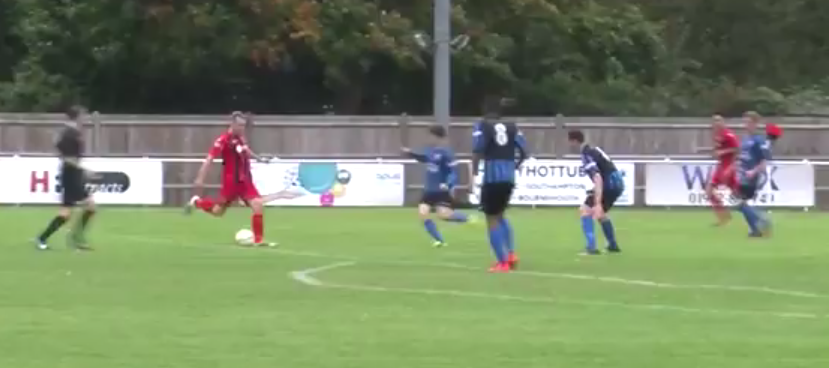Culture
REVIEW: The Verdict at the Mayflower Theatre

All rise in court, as for tonight your honour, the Mayflower theatre was transformed into Boston 1980. This play is a stage adaptation of a book and film both with the same name, all about an alcoholic Boston lawyer who is taking his last shot towards redemption in a medical negligence case against a very powerful attorney. Sounds like a great idea for a film and book right. Lots of detail and jumping from place to place with different story lines coming together to help the pace of the film progress. But would the same idea with long speeches packed full of detail work on stage? The answer? I think it does yes, and I think they’ve done it very well.
One thing that is always a worry about adaptations from screen, or book to stage, is the question, will people actually understand what is going on? Especially if they have no prior information about the storyline? And again I think the answer to that question is yes. Barry Reed’s book and David Mamet’s screenplay aren’t exactly the fastest paced stories to follow (especially not in the beginning), and one thing a play ideally needs to be is fast paced to keep that audience engagement. Margaret May Hobbs, who adapted the story for the stage, has done an incredible job at doing just this! Something that I was really impressed by was the overall energy from the cast, especially when the subjects they are talking about aren’t exactly the most exciting. The cast have clearly worked very hard with the director, Michael Lunney (who is also part of the cast), to each understand their characters fully and bounce off of each other to keep that tempo up.
It goes without saying the the role of the boozy Boston lawyer Frank Galvin, played by the well renowned Jason Merrells, was just perfection. Merrells’ performance hit all the right beats. He made us empathise with him, empathise for him and empathise for ‘his client’ all within the space of the same dialogue. From curtain up, we were with him the whole time taking in each and every word to fully help us understand not only the story, but his character. Fantastic! Nigel Barber who played the role of J. Edgar Concannon, the defence attorney to Galvin’s plaintiff, gave another performance to be noted. His character was almost the ‘bad-guy’ of the play, which when acting is a very fine line between over-acting and becoming the pantomime villain, or under acting and completely throwing the power dynamic of the on stage battle. Barber walked that fine line perfectly and produced another fantastic note-worthy performance. Congratulations! I’d also like to give a special shoutout to Vincent Pirillo playing the role of Moe Katz, Galvin’s law partner; he added a different dimension to the cast almost being the voice of reason that the audience could resonate through. As previously mentioned, everybody clearly knew their roles like the back of their hands and their on stage connections were fantastic (especially the Galvin and Donna Saint Laurent (Reanne Farley) love interest). Brilliant work all round from each and every member of the cast!

The sound and lighting of the play were very simple and that’s all it had to be. Nothing fancy needed to be done, the set just needed to be lit and then every now and then a sound effect needed to be played. That’s literally it. As for the set, again it was very simple but I think that’s all it really needed to be. We saw multiple different places that we became familiar with, in Act 1 it was Galvin’s office and Meehan’s Bar which were fixed and didn’t move throughout the entirety of the act (just lit up when in use). In Act 2 it was just a fixed court room which was set up with three clear walls and the audience being the 4th (more on this a little bit later). There were drop down pieces of set throughout both acts which acted as another place and they too were fine I just wish that instead of being fixed in place and sitting in darkness when not in use, set pieces could roll on and off. I think it would have been that little bit clearer to help keep the attention of the audience for longer. That being said, the pièce de résistance is the courtroom (being a courtroom drama) and my hat goes off to all of the set and scenic art designers. They really brought Boston to Southampton.
For the pacing of the play, Act 1 did seem a little bit slow and actually felt a lot longer than it was. Act 1 was all about setting the scene and story for what was to come. So you can understand why it felt that little bit longer. Having said this, they did manage to cram a lot of information in without making us feel lost from what was going on. Job well done I’d say. I remember turning around in the interval and saying, “That actually felt like I was watching a movie, not a theatre production”. Something I think I have never said in the theatre before! Both Acts began when the houselights were still up and some silent acting was going on on-stage. It was almost as if the audience were a fly and the wall of these normal people’s lives and it could’ve been very effective. Unfortunately I just don’t think many of the audience quite got it. Everybody was just sort of looking around at each other asking “Has it started?”. Act 2 was the big crescendo of what Act 1 was leading to. The trial. My oh my was it good. The acting, mixed with the brilliant writing left the audience audibly gasping. You couldn’t get much more up tempo than this. Without revealing any spoilers, there were so many twists and turns that were so unexpected, throwing the classic ‘court-drama dramatic-irony’ out of the window. The thing I liked most about Act 2 was the indirect 4th wall break. Throughout the whole Act, the audience played the role of the jury. Yes the actors were talking directly out to us as If we were the jury, but it never became cheesy as they were never expecting an answer – much like a real jury in court. We were all of a sudden a part of this story we had become so invested in. Superb!
The stage adaptation of ‘The Verdict’ does incredibly well at getting a complex story across, making the audience feel invested and even feel apart of the story that they’d just experienced. You end up going through a full range of emotions and the whole cast and company have done a fantastic job in creating this captivating story live. ‘The Verdict’ has had a very successful run on tour and you can definitely see why! A massive congratulations to everybody involved – court is adjourned.
Culture
Where confidence takes centre stage: How theatre transforms

Performing arts education isn’t just about learning to act, dance, or sing – it’s vital in developing many young people’s confidence and self-expression.
In a digital age where young people are spending more time on their devices than ever before, theatre education provides lifelong skills like communication, resilience and teamwork.
I caught up with some of the students at Artisan Theatre School, a Hampshire based youth theatre club, to see if this rings true.
Ben, 18, said his time at theatre school has “helped develop people skills” and made him “a more confident person”.
He urged other young people to “get involved and enjoy it!”
Daniel, 17, shared a similar sentiment saying his “confidence has grown a lot”.
Theatre education can open a whole world of new opportunities for young people, giving them the space to discover their talents and explore future career paths.
Lucy, 17, has attended Artisan Theatre School for nine years and said: “I want to be a performer in some capacity.”
She added: “That’s my dream because of Artisan.”
Emma, a singing teacher at the school, said performing arts education is “beneficial to anyone,” not just those pursuing it professionally.
She added it can be especially valuable for children with SEN, helping them build confidence, improve communication, and “come out of their shell” in a supportive environment.
Unfortunately, despite its benefits, arts education is not guaranteed for every young person.
Cuts to funding over the last decade has had a significant impact, limiting access to creative learning opportunities.
The Cultural Learning Alliance’s 2025 report reveals a 42% decrease in Creative Arts based GCSE entries since 2010, and a 27% decline in the number of Arts teachers.
Sam Blackwell, principal and founder of Artisan Theatre School, said arts education is “really important” and that “they don’t do enough of it in schools”.
She explained that her vision in creating the school was to “give back more to kids and get them being confident”.
To help fill the gaps left by reduced arts provision in schools, Sam plans to introduce additional classes and offer increased opportunities for her students to learn from industry professionals.
Culture
And we all keep dancing for it can’t get any worse (90s/00s)

The Shakespearean nature of Tony Blair’s time as Prime Minister is something that had never been seen and his obsession with “the spin” that had won him the 1997 election and made him one of the most popular prime ministers when entering office.
With large proportions of the public optimistic for his premiership incoming.
A fall from grace would ensue much like Macbeth.
It would be cruel and untrue to reflect on Tony Blair’s premiership to say that it was a complete failure, especially as many still see him as one of the best PMs the UK has ever had.
Since one of the biggest landslides in UK election history in 1997, he was able to push through many socialist policies without much of a hassle: inflation was low, crime was down by a third, children were achieving some of their highest results ever in school, thousands more students were going to university, a million pensioners and three million children had been taken out of poverty, the quality of the air, beaches, and drinking water was as clean as before the industrial revolution.
However 9/11 changed everything. The era of youthful optimism and rebellion has been replaced by what a lot of thinkers call post-post modernism.
At site Zero, George Bush claimed that “those who are responsible must be brought to justice.”
He outlined Cuba, Iran, Libya, Syria, North Korea and most importantly Iraq.
Once the troops stepped into Iraq, it was the start of a domino effect that quickly decimated Blair’s time as PM.
Unlike Kosovo and Sierra Leone, Britain’s involvement in Iraq did not have the public’s support.
In his book The Prime Ministers, Steve Richards remarks that Tony Blair had not assumed any cabinet position in the lead up to his premiership and asks:”What if Blair had been foreign secretary? at least he would’ve seen, and interpreted intelligence – an explosively contentious issue in the run-up to the Iraq War.”
And then, the day after London had been announced as the host of the 2012 Olympics, on the 6th of July 2005, 7/7 happened.
Four terrorists detonated bombs on public transport – 52 killed and 784 were injured.
When times get tougher and life gets sadder, what do people do? Dance to forget
Prince William and Kate were leaving a Chelsea nightclub at 3am, Prince Harry was partying with Kanye West and getting into a scuffle with photographers at 4am.
The 2000s club scene was here and everyone was taking part; it was loud, it was abrasive, and it was here to stay.
Since the introduction of the stifling 1994 Criminal Justice Act, which is considered to have brought the illegal rave era largely to a close, “free parties” were the new get-around of the law: Student clubs offering “buy one, get three free” on alcopops and 50p doubles for an hour.
Halls bars were £1.20 a pint. Artists like LCD Soundsystem, Missy Elliot and Rihanna began their rise to fame with dirty, booming soundscapes that captured the drug-fuelled atmosphere of clubs as everyone dances to a beat that never seems to end, drenched in sweat.
Films like Trainspotting capture the allure of 2000s clubbing but the grim reality, drugs have found their way into the club scene.
Much like the Oasis album Standing on the Shoulder of Giants is described as Oasis’ “come down album”, the 2000s was a comedown era of clubbing.
The times were sad, but the music got louder?
As David Cameron’s government entered Number 10 Downing Street in 2010 and ushered in 14 years of austerity, where exactly would clubbing culture go with almost all clubs closing….
Culture
REVIEW: Sigrid – There’s Always More That I Could Say

2 out of 5 stars
A disappointing third album filled with negativity
In all honesty, I was late to Sigrid’s party.
I started following the Norwegian pop star in 2023 when she had already released two albums and completed a slew of EPs and international tours.
In no time at all, I was captivated by her rasping tones, funky rhythms, and cool electronic synths.
When news broke that her third album would be releasing on 24 October, it was no surprise to find myself listening and assessing it…
Jellyfish is the first single and the most lighthearted. I like it.
It’s a nice story about two people meeting at a dance and kindling a relationship.
Sigrid sings in a syncopated rhythm, giving a jazzy tone to the tune.
For the first time in her career, she includes a flute.
Cold, gritty, grim
It plays a flourish at the beginning but I can’t hear it throughout the rest of the track. It would be good to hear more of the flute in future.
Fort Knox is single number two. As the name suggests, this is a cold, gritty, grim song about a woman betrayed by her man.
This betrayal cuts so deep that she has retreated into her shell to “lock my love up in… Fort Knox”.
I enjoyed the dramatic, dark nature here, especially the war cry chorus throughout the song.
Towards the end, you would think the song has finished before it plays one more crescendo of strings to cap things off. I thought that was unnecessary.
The third single, Two Years, is written from the perspective of the woman’s boyfriend, another new departure for Sigrid.
He has been chasing for that exact period of time. It’s a cheery song with a strong beat, despite the desperate lyrics like: “What are you running from? / Why did you let me go?”
I’ll Always Be Your Girl is another sad song of frustration and heartache caused by a rowdy, hot-headed partner.
It is sung very well, especially the pleading chorus line, and the drum-guitar combination gives me something to nod along to.
Unconventional energy
Do It Again is the most unremarkable song on the album.
There is a good guitar and drum track, however the story again is quite predictable for Sigrid (being tempted to rekindle on old flame relationship).
Kiss The Sky returns to more unconventional energy which is great.
A lovely fade into the track leads into the main verses.
This time, Sigrid is speaking her verses with a distorted effect rather than singing them. It sounds good and complements her natural raspiness.
A strong guitar riff carries us through the bridge. The electronic synths make this seem like a 1980s dance track.
It’s only the lyrics that make this song a story of disappointment between lovers.
There is sexual innuendo in Hush, Baby, Hurry Slowly.
You could interpret it as a man and woman deciding whether to move forward with their relationship.
You could see it as partners deciding whether to have sex or not.
As a result, it’s an interesting song and makes you listen to try and work it out.
The structure shakes things up by starting with the chorus fading in.
The song ends with the melody slowing down and lowering in pitch, reflecting the title in musical terms.
The title track is the obligatory solo piano song.
Sigrid has had at least one piano focused song in all albums.
This is the most beautiful song in the album, featuring solo piano and a nice resonance on the voice.
The lyrics still contain tensions between people, like “giving…my worst” as a girlfriend.
Nevertheless, this is my favourite song from this year’s collection.
The penultimate track is also the longest in the album.
Have You Heard This Song Before picks up the energy from the previous song with a predictable but welcome mix of drums and synths.
The lyrics are pretty hopeful in tone about wanting to spend time with your partner. This is the most positive track on the album.
The last song, Eternal Sunshine, is a conventional finale song.
It has a regular beat and instrumentation.
It is another song built out of frustration with a partner – she wants to “drink” him out of her mind.
It would have been nice to have something different to end on – maybe a different topic.
This is the shortest album Sigrid has released. That is disappointing.
There are 10 songs in only 31 minutes.
I would have expected the usual 12 tracks or more.
The previous albums managed it fine.
Sucker Punch (2019) and How To Let Go (2022) contained 12 songs. The Special Edition of How To Let Go added 15 songs on top of the originals.
This album differs from the last two in that every song but one is constantly loud, energetic, and pumping.
I would have preferred more balance between softer and pounding songs.
How To Let Go had more positivity in it, such as singing in a taxi, body-confidence in the mirror and making the most of life.
This album has replaced that with disappointment and frustration.
It is the album with the most “explicit” songs – never before have we had an album with so much swearing.
I hope that is toned down in future.
Here’s hoping that the next album is more positive, unconventional and creative.
Perhaps that will come out in three years, like the others.
There’s always more that Sigrid could say (sorry, that was a terrible joke).
-

 Football9 years ago
Football9 years agoFootball – Winchester City vs Didcot Town
-

 Community9 years ago
Community9 years agoWinnall community association renovated
-
Community8 years ago
Hampshire’s frontline services at risk
-

 Hampshire8 years ago
Hampshire8 years agoUniversity of Winchester Parking Trouble
-
Community8 years ago
Knight Bus unveiled at school
-

 Community8 years ago
Community8 years ago‘Controversial’ new plans take shape in Eastleigh
-

 Winchester News Online8 years ago
Winchester News Online8 years ago#MiracleMissy Update
-

 Bulletins7 years ago
Bulletins7 years agoWINOL 20 November 2018
